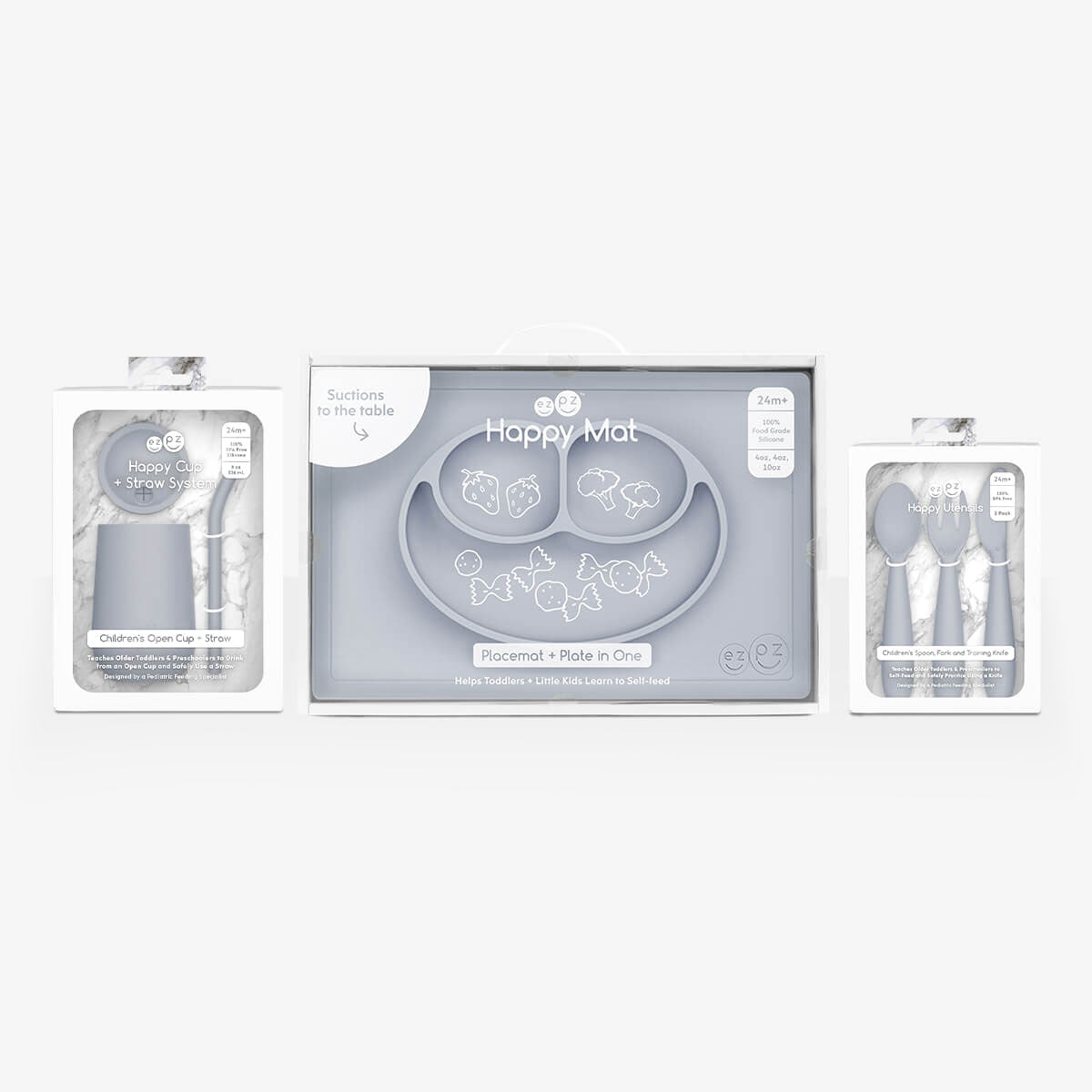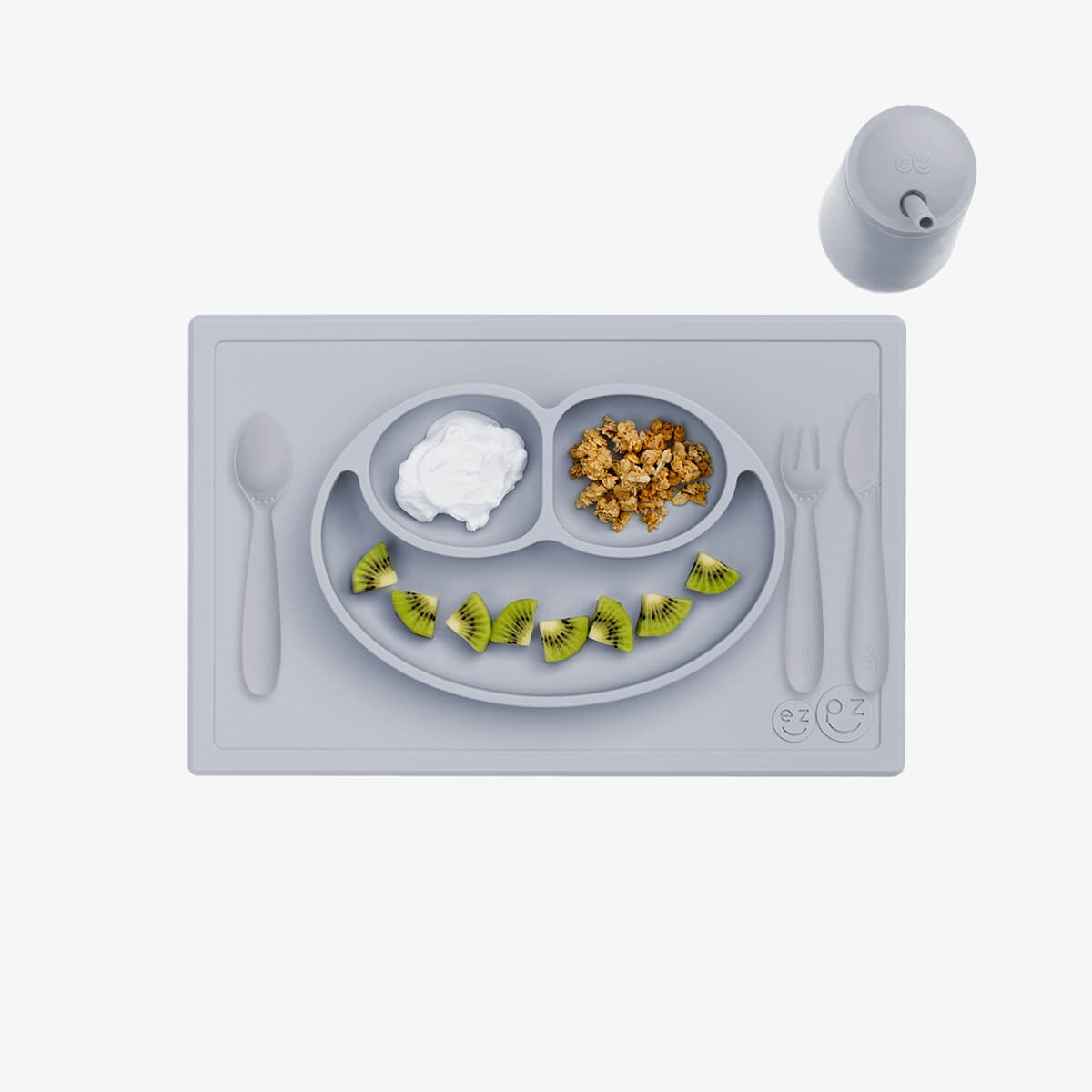When parents and professionals find out that I’m a fan of baby-led weaning (BLW), they usually ask about choking. But fears about choking can be calmed! By understanding how children choke, parents can learn how to reduce the risks. Here are a few of my favorite tips to avoid choking.
Observation: It is important to supervise your child during all meals and snacks. Here are a few clever ideas to ensure safe introduction to foods.
- Check-up: Before you start solids, have a check-up with your pediatrician and/or Speech Language Pathologist (SLP). I can’t tell you how many times a family has come to me after multiple choking episodes only to find out that the child had a small cleft palate, lip tie, tongue tie or swallowing disorder. Once resolved, solids were a huge success!
- Watch the swallow: Watch your child as she swallows liquids (breast or formula) and observe the coordination of sucking and swallowing. Then check out this coordination when swallowing purees and strips of soft foods like banana and avocado. Discuss any concerns you have with your medical team.
- Seating: You can’t observe your children at mealtime if they are moving around while eating. In my experience, this grazing habit is one of the most common reasons for choking. To improve safety, make sure kids are sitting in an appropriate high chair with a footrest while eating.
- CPR: Make sure all caregivers are not only certified but feel comfortable giving CPR to a baby or toddler if needed.
Preparation: The most common cause of death for children under three years of age is choking. So, it is imperative that we prepare for a safe mealtime by adapting our feeding environment for children.
- Thermal stimulation: Try reinforcing a drink after several bites of food. Thermal stimulation (offering cold or warm drinks) during mealtime can be helpful for kids to ‘feel’ the food left over in their mouth and teach them how to swallow more safely.
- Cutting: Learn to cut foods appropriately by age and developmental skill in order to decrease a choking episode. If you are unsure how to safely prepare foods for your baby, try using the Baby Led Weaning Food Cutters, which makes BLW food prep ezpz!
- Soften foods: Learn to soften foods (hard foods are a common choking hazard) with sauces, temperatures and cooking styles.
- Midline: Finding mealtime gear for the age and stage of your child (such as the First Foods Set, Mini Feeding Set or Happy Feeding Set) is key for keeping them in a stable position for eating and drinking. These plates and bowls suction to the table and help children stay at midline, which may decrease the risk of choking. In addition, learning additional strategies for positioning can keep your child’s airway protected.
- Ward off hangry: I like to offer foods right before the child starts to get hungry. Ideally, we want the food to be prepared and placed on the Mini Mat, have them already sitting in the chair and THEN have their hungry cues kick in. This technique helps decrease mealtime behaviors that can cause choking. Yes, hangry is real folks!
- Accessibility: Keep all foods out of a child’s reach in your kitchen. This will decease the chance of your child grabbing something unsafe and choking on it.
- High-risk foods: Avoid high-risk foods like hot dogs, whole cherries, marshmallows, whole grape tomatoes, hard candy, popcorn, whole nuts and whole grapes until your child is over 4 years of age.
What is your favorite tip for avoiding choking with your little one? What are some of your go-to safe foods for your kids? #ezpzfun #blw


















